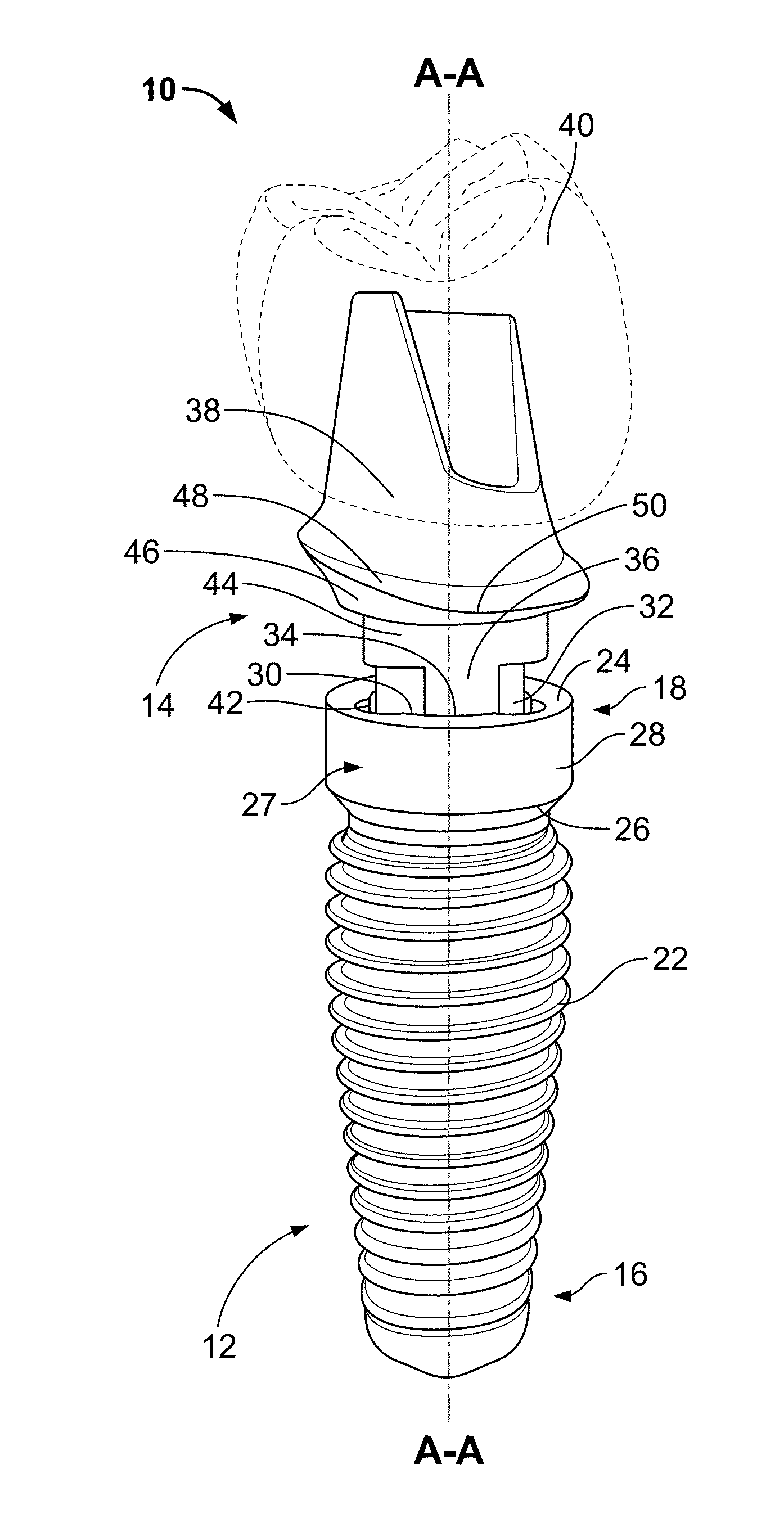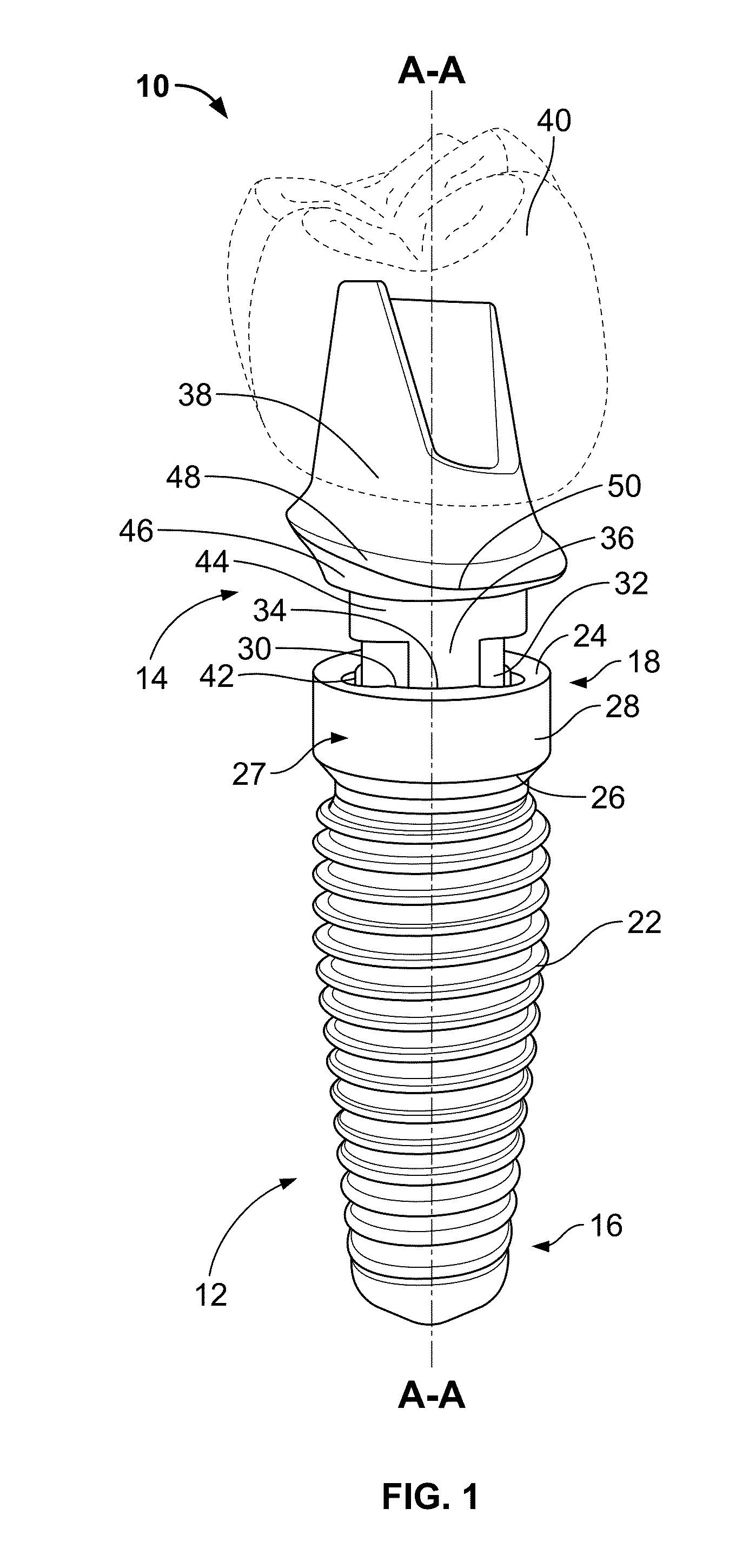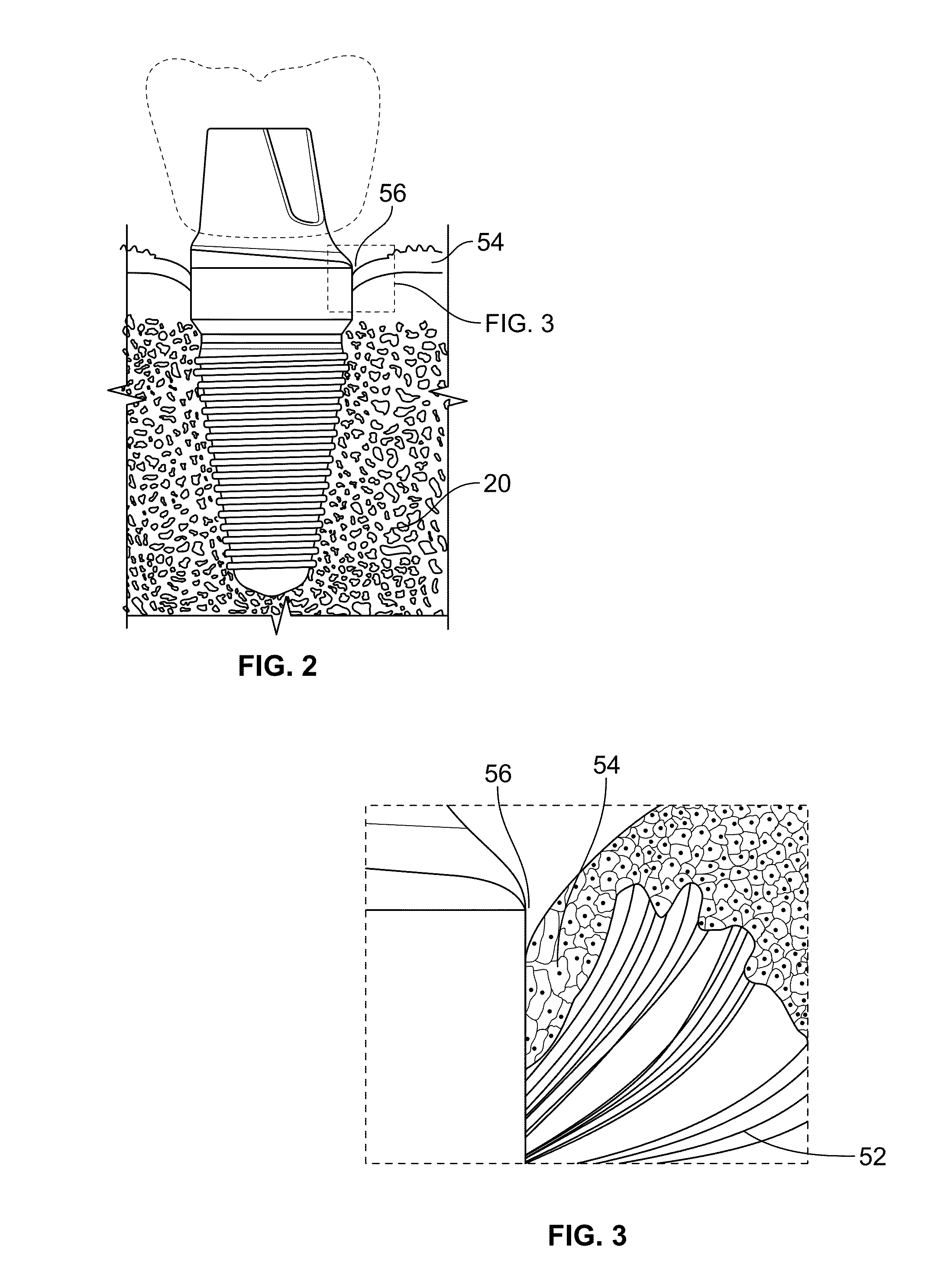Modification of root form dental implants for accelerated tissue regeneration
- Summary
- Abstract
- Description
- Claims
- Application Information
AI Technical Summary
Benefits of technology
Problems solved by technology
Method used
Image
Examples
Embodiment Construction
[0029]The present invention will now be described with reference to a particular dental implant prepared according to embodiments of the present invention. It should be understood that this description is merely exemplary and is not limiting as to the scope and spirit of the invention. One of ordinary skill in the art will recognize that other implants, compositions and methods of preparation and use are possible and that such other implants, compositions and methods are intended to fall within the scope of the present invention.
[0030]The present invention relates to dental implants coated with biomimetic nanofibers to form a nanofiber scaffold (also referred to herein as nanofiber mesh). The nanofibers may incorporate biomolecules such as, for instance, chitosan, collagen, extracellular matrix proteins, antibiotics, growth factors, inorganic particles or other bioactive agents known in the art to further enhance tissue growth and prevent infection. Nanofibers may be deposited on th...
PUM
 Login to View More
Login to View More Abstract
Description
Claims
Application Information
 Login to View More
Login to View More - R&D
- Intellectual Property
- Life Sciences
- Materials
- Tech Scout
- Unparalleled Data Quality
- Higher Quality Content
- 60% Fewer Hallucinations
Browse by: Latest US Patents, China's latest patents, Technical Efficacy Thesaurus, Application Domain, Technology Topic, Popular Technical Reports.
© 2025 PatSnap. All rights reserved.Legal|Privacy policy|Modern Slavery Act Transparency Statement|Sitemap|About US| Contact US: help@patsnap.com



